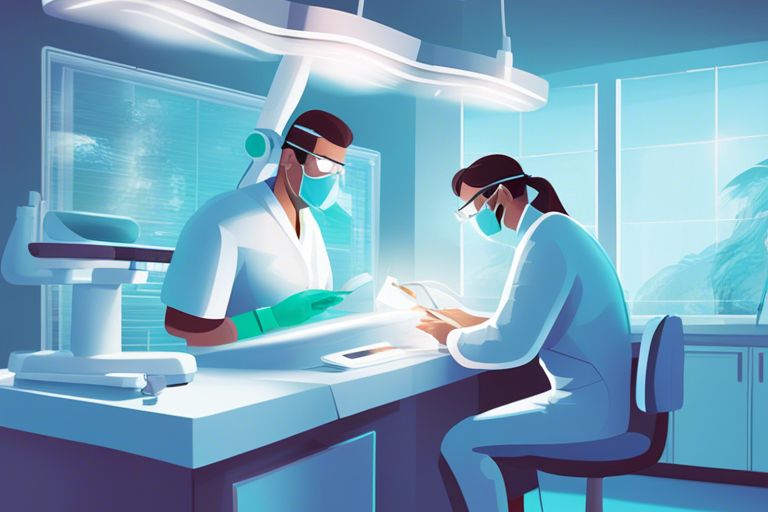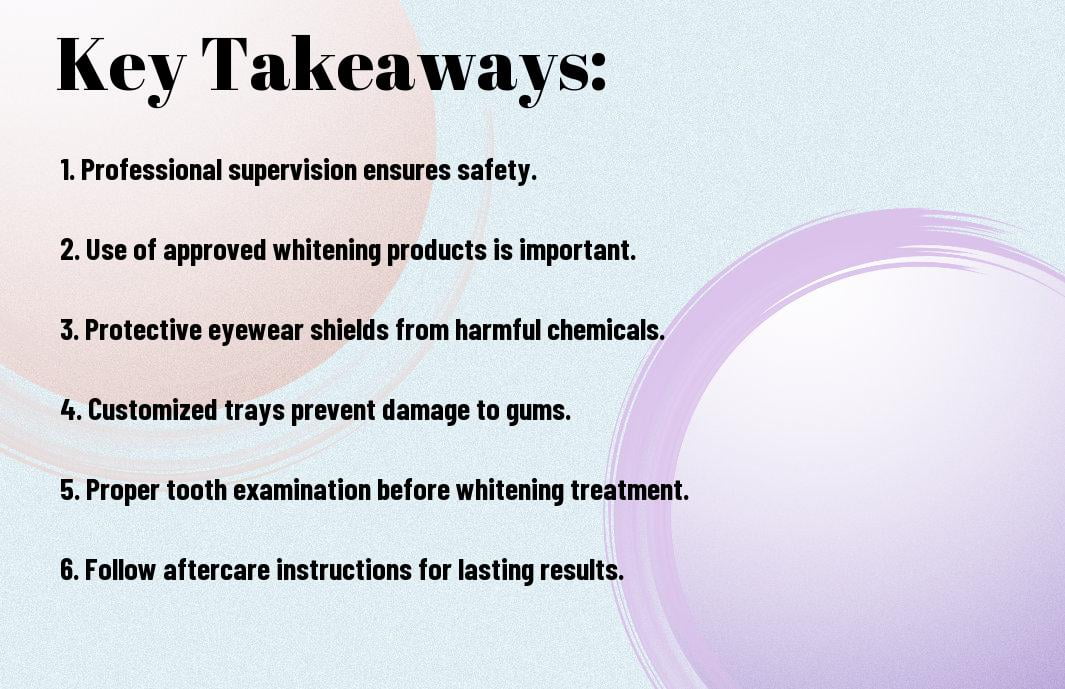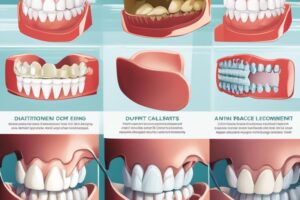Measures must be strictly followed in professional teeth whitening procedures to ensure the safety and well-being of patients. Professional teeth whitening treatments are highly effective in achieving a brighter smile, but they involve potent bleaching agents that can cause harm if not applied correctly. Proper protective gear such as goggles and barriers for the gums are vital to prevent any accidental exposure to the bleaching solution. Additionally, dentists or trained professionals should oversee the process to monitor for any adverse reactions and ensure optimal results without compromising oral health. Prioritizing safety measures is crucial when undergoing any dental procedure, and in the case of teeth whitening, it is paramount to prioritize both safety and efficacy for a successful outcome.
Key Takeaways:
- Use of Protective Eyewear: It is necessary for both the patient and dental professionals to wear protective eyewear during professional teeth whitening procedures to prevent any accidental exposure to the whitening agents.
- Isolation of Gums and Soft Tissues: Proper isolation of gums and soft tissues using protective barriers like dental dams or gels is crucial to prevent any irritation or damage during the whitening process.
- Regular Monitoring and Post-Treatment Care: Dental professionals should monitor the whitening process closely to ensure the safety and comfort of the patient. Providing post-treatment care instructions and follow-up appointments is important for optimal results and maintaining oral health.
Understanding Professional Teeth Whitening
The Teeth Whitening Process
To achieve a brighter smile, professional teeth whitening involves the use of high-concentration bleaching agents that are carefully applied to the teeth. These agents break down stains and discoloration, resulting in a whiter smile. The process is usually done in a dental office under the supervision of a trained professional.
Benefits of Professional Whitening Over DIY Kits
In the context of teeth whitening, professional treatments offer several advantages over DIY kits. Professional whitening treatments are safer as they are administered by experienced professionals who can monitor the process and adjust the treatment as needed. The results of professional whitening are also more predictable and long-lasting compared to over-the-counter options.
Identifying Risks and Safety Concerns
Common Risks Associated with Teeth Whitening
Some teeth whitening procedures can lead to increased tooth sensitivity, gum irritation, and potential damage to the tooth enamel. Over-the-counter whitening products may not be regulated properly, leading to misuse and potential harm to the oral tissues. It is crucial to be aware of these risks before undergoing any whitening treatment.
How Professional Whitening Minimizes Potential Harm
Teeth professional whitening procedures are performed under the supervision of trained dental professionals who take necessary precautions to minimize risks. By using customized trays to protect the gums and applying professional-grade whitening agents in controlled concentrations, the potential for harm is significantly reduced. These measures ensure that the whitening process is both safe and effective.
Identifying the right candidate for teeth whitening is crucial in minimizing risks. Dentists assess the oral health of the patient, including the condition of the teeth and gums, to determine if whitening is a suitable option. Patients with underlying dental issues such as cavities or gum disease may not be recommended for whitening procedures until these issues are addressed.
Implementation of Safety Measures
Pre-Treatment Evaluations and Client Consultation
Evaluations play a crucial role in ensuring the safety and effectiveness of professional teeth whitening procedures. Before initiating any treatment, it is imperative to conduct a thorough pre-treatment evaluation and consultation with the client. This includes assessing the client’s dental health, existing restorations, and any previous sensitivity issues to determine their suitability for the whitening procedure.
Use of Protective Gear and Application Techniques
One of the key safety measures in professional teeth whitening is the use of protective gear such as goggles, gloves, and masks by both the client and the dental practitioner. Additionally, proper application techniques must be employed to minimize the risk of gum irritation and tooth sensitivity. The use of barriers to protect the soft tissues in the mouth is also crucial for a safe whitening experience.
Safety measures such as using protective gear and implementing correct application techniques not only protect both the client and the practitioner from potential harm but also ensure a more effective and comfortable teeth whitening experience. By following these safety protocols, professional teeth whitening procedures can be conducted with confidence and peace of mind.
Regulations and Best Practices
Industry Standards for Safety and Hygiene
All professional teeth whitening procedures must adhere to strict industry standards for safety and hygiene. This includes ensuring that all equipment is properly sterilized and that the workspace is kept clean and sanitized at all times. Proper infection control measures must be followed to prevent any cross-contamination between patients, and dental professionals must wear appropriate personal protective equipment (PPE) such as masks, gloves, and protective eyewear.
Continuing Education for Dental Professionals
Continuing education is necessary for dental professionals to stay updated on the latest techniques, technologies, and safety protocols in the field of teeth whitening. Regular training and education help ensure that dental professionals are aware of any new developments or guidelines that may impact the safety and effectiveness of teeth whitening procedures.
For instance, dental professionals can attend workshops, seminars, or online courses specifically focused on teeth whitening to enhance their knowledge and skills in this area. By staying informed and educated, dental professionals can provide the best possible care for their patients and maintain a high standard of safety and hygiene in their practice.
Post-Whitening Care and Maintenance
Guidelines for Post-Whitening Oral Care
For optimal results and to maintain the whiteness of your teeth after a professional whitening treatment, it is crucial to follow some guidelines for post-whitening oral care. These include avoiding foods and beverages that can stain your teeth, such as coffee, tea, and red wine, and refraining from smoking. Brushing and flossing regularly are imperative to prevent plaque buildup and maintain the brightness of your smile. Using a whitening toothpaste recommended by your dentist can also help in preserving the results of the whitening procedure.
Monitoring and Managing Sensitivity After Treatment
Sensitivity after a teeth whitening treatment is common, but it can be managed with proper care. Monitoring any sensitivity is important, and if it persists or becomes severe, consulting with your dentist is recommended. Your dentist may suggest using a desensitizing toothpaste or gel to alleviate the discomfort. In some cases, avoiding very hot or cold foods and drinks for a few days can help in reducing sensitivity.
Managing sensitivity after a teeth whitening treatment involves being cautious with your oral hygiene routine and avoiding triggers that can worsen the sensitivity. Following your dentist’s advice on post-whitening care and using any recommended products can help in managing sensitivity effectively.
Conclusion
The implementation of safety measures in professional teeth whitening procedures is imperative to ensure the well-being of patients and the efficacy of the treatment. By following strict guidelines, such as using FDA-approved whitening agents, properly fitting protective gear, and conducting thorough patient assessments, dental professionals can minimize risks and achieve optimal results. It is crucial for practitioners to prioritize safety at all times to guarantee a safe and successful teeth whitening experience for their patients.
FAQ
Q: Why are safety measures important in professional teeth whitening procedures?
A: Safety measures are crucial in professional teeth whitening procedures to protect the health and well-being of patients. With the use of potent bleaching agents and specialized equipment, following strict safety protocols ensures the procedure is effective and minimizes any potential risks or side effects.
Q: What are some common safety measures implemented during professional teeth whitening?
A: Common safety measures in professional teeth whitening include the use of protective eyewear for both the patient and dental staff, application of a protective gel to the gums to prevent chemical burns, and regular monitoring of the whitening process to prevent overexposure to the bleaching agent.
Q: How can patients ensure the safety of the teeth whitening procedure?
A: Patients can ensure the safety of the teeth whitening procedure by choosing a reputable dental professional with experience in performing whitening treatments. It is important to disclose any existing dental conditions or allergies to the dentist before the procedure and to follow post-whitening care instructions diligently to maintain oral health.







